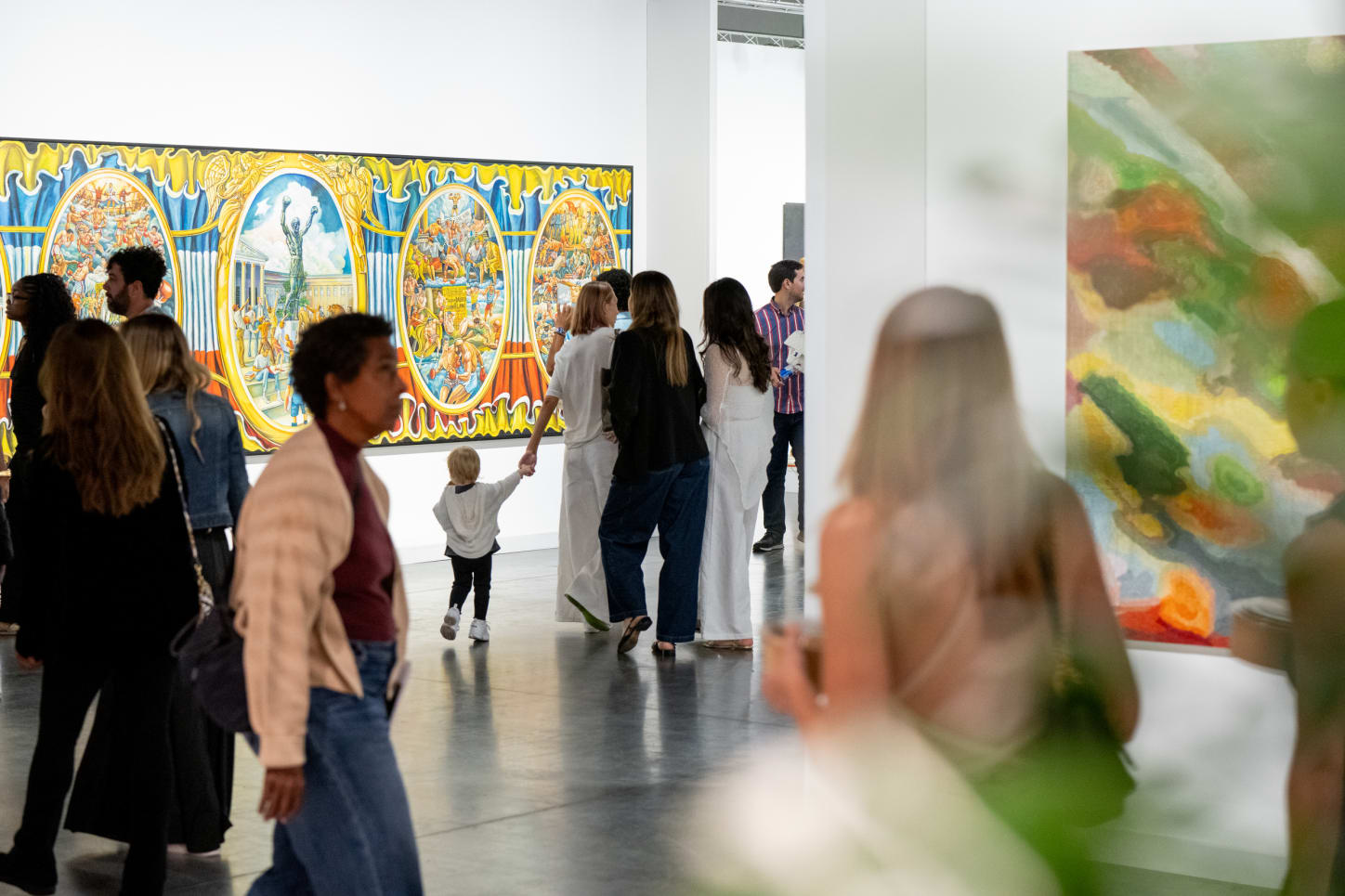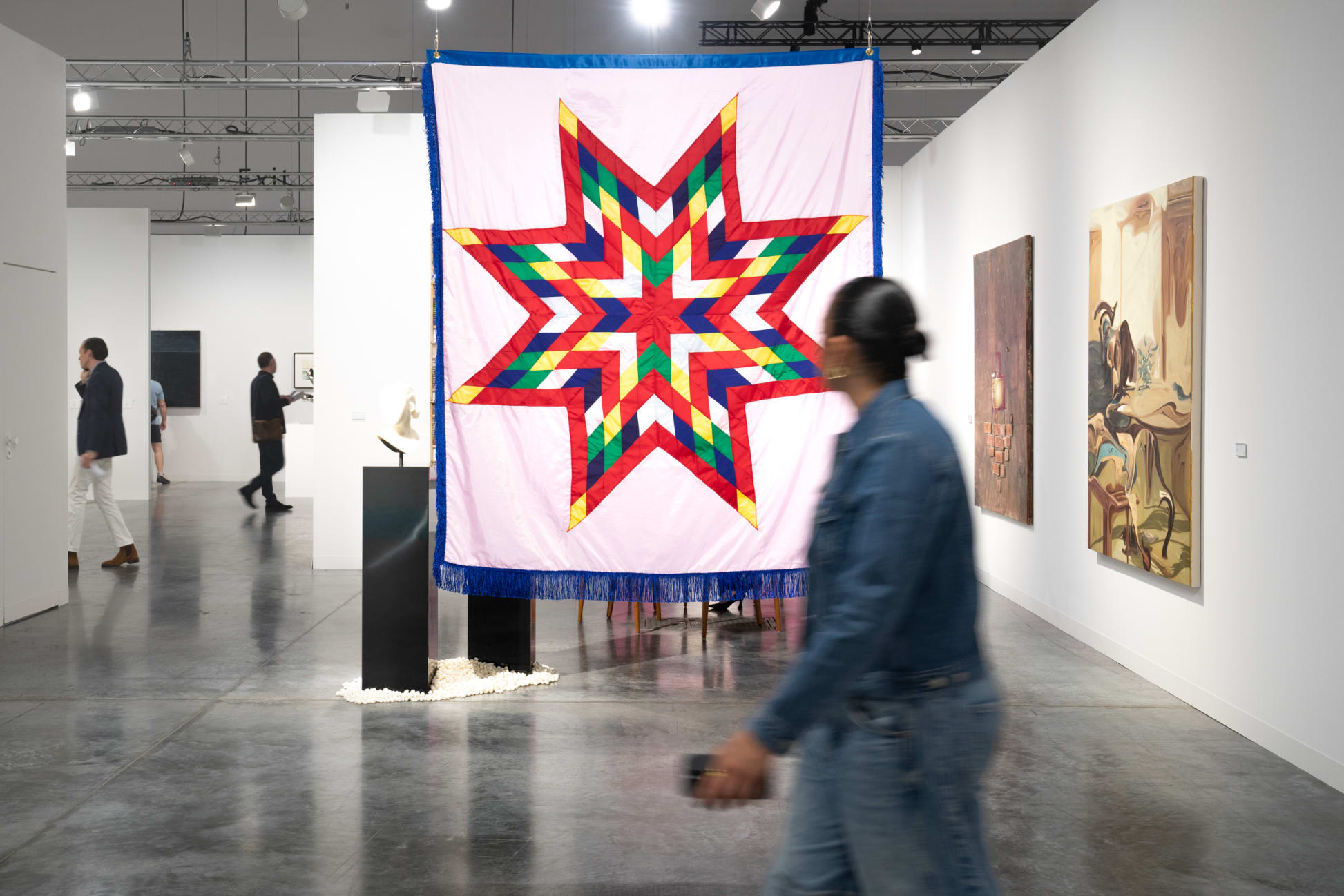The Art Basel and UBS Survey of Global Collecting 2025
The survey shows sustained engagement with art among HNW collectors, especially younger and female buyers
The survey, authored by Dr. Clare McAndrew, founder of Arts Economics, reveals fresh insights into the evolving behaviors and motivations of 3,100 HNWIs across 10 markets through the first half of 2025. Notably, the study reveals how collecting behavior varies by gender and contains a high participation of Gen Z and Millennial respondents (74%), providing new perspectives into the motivations of collectors of the future.
This year, the survey:
- Samples 3,100 HNW collectors across 10 key markets: US, UK, Mainland China, Hong Kong, France, Switzerland, Germany, Japan, Brazil, and Singapore. It analyzes spending habits, preferences, event attendance, motivations for collecting, and interactions with artists, galleries, and institutions.
- Places a special focus on the collecting habits of women and the next generation of art collectors. It studies the attitudes of HNW collectors toward uncertainty, risk preferences and sensitivities, and explores how these vary by age and gender.
- Shows that despite a challenging economic context, engagement with art remained strong. HNWIs continued to allocate a significant proportion of their wealth to their art collections, rising to an average of 20% in 2025 (up from 15% in 2024).
- Reveals shifts in collecting habits and taste across generations. Boomers led in average spending on fine art and antiques, while Millennial and Gen Z collectors outspent older peers in a range of cross-collectible luxury, design, and lifestyle categories. Showed Millennial and Gen Z HNWIs collecting across a wider array of fine art mediums. Boomers concentrated on paintings, whereas Gen Z showed the highest participation rates for digital art and film and video art. Millennials were the most active collectors of prints, photography, and works on paper.
- Highlighted that in 2024 (the most recent full year of data), HNW women outspent their male peers by 46% on average, driven by Millennial and Gen Z collectors.
Clare McAndrew, Founder, Arts Economics, said: ‘Against a backdrop of heightened global economic uncertainty, this study provided a valuable opportunity to examine how collectors adapt to risk, focusing especially on differences by gender. Contrary to the common stereotype of women as more risk-averse than men, the findings reveal that in the context of collecting, women are equally aware of potential risks yet often more willing to embrace them in practice—purchasing across a broader range of non-traditional mediums and actively supporting emerging and unknown artists. Women also collected, and spent, more on works by female artists, a trend also evident among younger collectors. As wealth continues to shift both vertically and horizontally over the coming years, these trends are likely to foster greater balance and diversity in collecting in future.’
Noah Horowitz, CEO, Art Basel, said: ‘This year’s Art Basel and UBS Survey of Global Collecting provides a fascinating snapshot of how our field is evolving in 2025. Millennials and Gen Z are approaching the market with new behaviors, tastes, and modes of engagement, while the rising influence of women collectors and the championing of female artists are markedly impacting the trade. We also see younger collectors expanding beyond traditional categories into digital, design, and lifestyle collectibles, and acquiring works through an increasing number of channels. These invaluable insights guide us as we work to support galleries and their artists, cultivate new collecting audiences, and expand the global arts ecosystem.’
Paul Donovan, Chief Economist, UBS Global Wealth Management said: ‘The great wealth transfer is influencing more than just financial flows, it’s shaping collector engagement. As younger generations and more women assume stewardship of wealth, their collecting choices increasingly reflect personal values and social awareness. Many are drawn to art that speaks to identity, community, and purpose. This shift suggests a more reflective and values-driven approach to collecting, one that connects wealth with creativity and meaning in ways that resonate with the times.’
Key findings in further detail:
WEALTH AND ALLOCATIONS TO ART
- HNWIs allocated a growing proportion of their wealth to their collections in 2025: In 2025, collectors allocated an average of 20% of their wealth to art, up from 15% in 2024. Allocations to art rose with wealth as ultra-high-net-worth individuals (UHNWIs) with over $50 million in assets averaged 28%. Allocations to art rose with the length of time collecting, from 16% for collectors in the market for only two years up to 24% for those collecting more than 20 years. Gen Z collectors reported higher-than-average allocations, at 26%.
- Inheritance and collecting: Almost 90% of Gen Z collectors who had inherited works had kept them, underlining the importance of family traditions in building collections. Of all respondents across generations, 80% plan to pass their collections on to their children or spouses in the future.
HNWI SPENDING ON ART
- Overall: Despite the challenging economic environment in 2024 and 2025, HNW collector spending remained strong. Among the 3,100 HNW individuals surveyed, average spending totaled $438,990 across 14 works.
- By fine art segment: HNWIs diversified their spending through 2025, buying across a wide range of mediums, artists, and collecting categories. Of those purchasing fine art, the share of spending on paintings was down year-on-year, yet it remained the most-purchased medium and the largest by value, accounting for 27% of total fine art spending. Other segments such as sculptures, photography, and digital art saw higher shares of spending year on year.
- Digital art: Digital art saw the biggest year-on-year uplift in participation and spending. Just over half (51%) of the HNWIs surveyed had bought a digital artwork, and the medium ranked third in terms of spending, almost on par with sculptures at 14% of total spending on fine art, with higher-than-average shares in France (26%) and Japan (18%).
- HNWI engagement by generation: Boomers were the smallest segment in the sample, but reported the highest average spending, at nearly $993,000, followed by millennials at $523,000.
- Millennial and Gen Z collectors exhibited interest in a wider array of fine art mediums than their boomer counterparts: Boomers were most active in collecting paintings, while Gen Z led in purchases of digital art, as well as film and video art. Millennials showed the highest engagement with prints, photography, and works on paper.
- Cross-collecting: While boomers led in average spending on fine art, antiques, and watches, millennials and Gen Z demonstrated broader and more diverse cross-collecting interests. Millennials had the highest average expenditure on decorative art, design, and jewelry and gems, reflecting a dynamic shift in interests toward lifestyle-driven acquisitions. Gen Z had the highest averages in most other sectors including luxury collectible handbags (on par with boomers); collectible sneakers (almost five times the level of any other generational group); classic cars, boats, and jets; and sports assets.
- HNW female engagement: In 2024 (the most recent full year of data), women spent 46% more on art and antiques than men.
- By generation: Women outspent men in both the Gen Z and millennial segments, while the reverse was true for Gen X and boomers.
- By country: In Mainland China, HNW female collectors drove expenditure on arts and antiques, with averages over twice that of men. Similar margins were reached for female collectors in Japan and Germany. By segment: Women are often characterized as risk-averse in certain areas of spending and investment. However, female collectors allocated a lower share of spending to traditional mediums such as paintings than men, and had higher shares of digital art and photography.
- Female artists: On average, 49% of the works in women’s collections were by female artists, compared with 40% in men’s collections. This share was more than half among female collectors in the US (55%) and Japan (54%).
- Risk profile: A higher share of women were open to buying newly discovered artists than men. Through 2025, 55% of women reported buying works by unknown artists frequently or often (versus 44% of men), despite just over half of all respondents (52%) viewing such purchases as a high-risk.
SALES CHANNELS
- Multi-channel approach: HNW collectors continue to use a wide range of channels to buy art, but with notable shifts in emphasis. Galleries and dealers remained the most frequently used and highest-spend channel, with 83% of HNW collectors buying from them in person, online, or through an art fair in 2024 and the first half of 2025. Art fairs gained significant ground, with 58% of HNW collectors making purchases linked to fairs (up from 39% in 2023), underscoring their continued importance for in-person encounters and discovery. Digital channels also expanded: Instagram purchases were made by 51% of collectors (up from 43% in 2023), and direct-from-artist sales more than doubled in participation compared to the previous survey. By contrast, the share of participation and spending of this sample of HNWI at auction fell.
EVENTS
- Event attendance continued to stabilize: HNWIs averaged 48 art-related events in 2024, down by one year-on-year, but higher than the average of 41 in pre-pandemic 2019. On average, HNWIs attended 14 museum exhibitions in 2024 (seven at public museums and seven at private collections or foundations, with a similar 13 planned for 2025). Attendance numbers for gallery exhibitions and art fairs were relatively stable at seven and six, respectively, with both seeing an uptick compared to a smaller sample of similarly screened HNWIs in pre-pandemic 2019. Artist studio visits saw the greatest rise in attendance, from five in 2019 to seven in 2024 and eight planned for 2025.
- Future attendance: Nearly all respondents (96%) plan to attend art events in 2026, with 48% hoping to attend more than in 2025. Younger collectors were more likely to increase event attendance (56% of Gen Z respondents versus 49% of millennials and 36% of boomers).
OUTLOOK AND BUYING PLANS
- HNWI spending: Looking ahead, 40% of HNWIs planned to buy more art in the next 12 months (down slightly from 43% in 2024 and 54% in 2023). Selling intentions, by contrast, eased to 25% (from 55% in 2024), suggesting greater market stability. A quarter also planned to donate works, continuing a broader trend toward philanthropic giving.
- Cross-collecting: Almost half of those with buying plans hoped to buy a painting, with other popular sectors including sculpture (37%), digital art (23%), and photography (23%). There was a substantial increase year-on-year in those hoping to buy design and collectible items. Gen Z collectors had the most active buying plans across nearly all collectible categories, including around a third planning to buy watches, design works, and collectible wine, whisky, or spirits.
- Art market: 84% of HNWIs surveyed this year remained optimistic about the short-term future of the global art market.











































